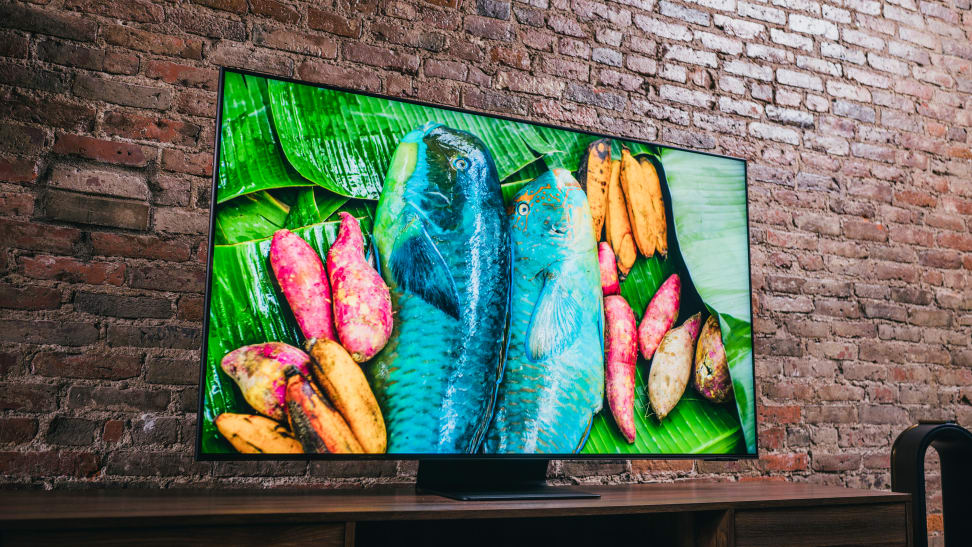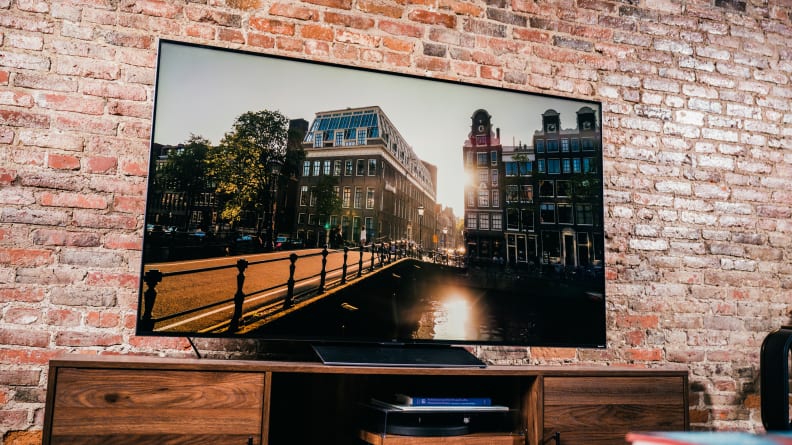What is mini-LED and how does it make TVs better?
If you want to imagine the future of LED TVs, think small.
 Credit:
Reviewed / Jackson Ruckar
Credit:
Reviewed / Jackson Ruckar
Recommendations are independently chosen by Reviewed's editors. Purchases made through the links below may earn us and our publishing partners a commission. Prices were accurate at the time this article was published but may change over time.
For a lot of folks, choosing a new TV used to come down to two factors: brand name and screen size. These days, there’s way more to consider, like display type, HDR support, smart features, and an ever-growing list of acronym-laced technologies that are enough to make the average buyer's head spin.
If you’re shopping for a TV, mini-LED is an important term to understand. It refers to a type of TV backlight that’s quickly becoming popular thanks to its many advantages when it comes to picture quality. But before you narrow your search down to mini-LED TVs, let’s get to the bottom of mini-LED technology—how it works, why you might want it, and how to get it.
Are mini-LED TVs still LED TVs?
Let’s make one thing clear up front: unless you own an OLED TV, an old plasma TV, or a very new, very expensive MicroLED TV, you own an LED TV.
You may have heard about “LCD TVs” in the past, and it would be understandable to think that LCD and LED TVs are different things—but they aren’t. LCD means Liquid Crystal Display, and refers to the TV’s panel. LED means Light Emitting Diode, and refers to the TV’s backlight. Every LCD TV requires a backlight, and LED is the type of backlight that illuminates any LCD panel. The diodes shine through the liquid crystal to create images in both LED TVs and in mini-LED TVs—in the latter, the diodes are just smaller.
So, although it may be a bit confusing at first, “mini-LED” simply refers to a type of backlight for a TV.
What are mini-LEDs and how do they work?

A mini-LED backlight gives a TV much higher overall precision when it comes to lighting various areas of the screen.
Mini-LEDs function similarly to the traditional LEDs found in a full-array backlight display, but they take on a much smaller form—as much as 75% smaller, to put a figure on it.
Smaller LEDs mean more diodes can be fit in a backlight array. When it comes to LED TVs, in general, the more backlight "zones" you have the better the picture will look. This is because the TV has a better ability to control what is (and what is not) illuminated on the screen. While it’s typical to find several hundred individually controllable LED “zones” in a high-end, full-array LED TV, you might find thousands of such zones in a mini-LED TV. Unsurprisingly, this has a significant impact on picture quality.
What are the benefits of mini-LED?
Because they can fit more diodes than TVs with traditional backlighting, mini-LED TVs tend to offer a brighter picture with better overall contrast. This is because the increase in LEDs—together with their tiny size—allows a TV to brighten and dim smaller portions of the picture with more accuracy than traditional LED panels.
With more control over more areas of the screen, a mini-LED TV has a better shot at limiting problems like light bloom. If you’ve ever seen a movie’s subtitles exhibit a ghostly blue or gray glow over a dark background, you’re familiar with this phenomenon. Light bloom tends to happen when a TV’s LED backlights are scant, and mini-LED backlighting goes a long way toward correcting this issue.
It's also important to understand that just the word "mini-LED" can potentially be misleading. If a display has smaller backlights, but doesn't offer a significant amount of extra backlight zones than a traditional LED TV, its performance advantage may be minimal or non-existant. And just because your LED TV doesn't have mini-LEDs doesn't mean it can't display accurate contrast and a bright and engaging picture. That said, generally mini-LED TVs will have an advantage over their LED counterparts when it comes to displaying the brightest and darkest elements on your display.
Which TV brands sell mini-LED TVs?

Thanks in part to its mini-LED backlighting, the 6-Series balances searingly bright highlights with relatively deep black levels.
Below are a few examples of top brands that utilize mini-LED technology:
Samsung is one of mini-LEDs greatest champions—not only has the brand been selling mini-LED TVs for years, but Samsung has also proven to be one of the most successful at implementing the relatively new display type. The company’s Neo QLED line of TVs—like the award-winning QN90A—combine mini-LEDs with quantum dots, tiny crystals added to a display that improve brightness and color. On our favorite Samsung TVs (like the Q90A), the result is sensationally bright, colorful images that maintain impressively deep black levels.
LG offers its own blend of mini-LED backlighting and quantum dot color dubbed QNED. TVs like the 8K QNED99 combine mini-LEDs, quantum dots, and LG’s proprietary NanoCell technology, which is said to absorb unwanted light wavelengths for a better picture. This year, LG is offering a brand-new lineup of 2022 QNED TVs.
TCL was one of the first manufacturers to jump on the mini-LED train. The 2019 TCL 8-Series was one of the first mini-LED TVs we reviewed and the company even brought this display tech to its 8K 6-Series TV in 2021. TCL’s OD Zero mini-LED display technology is a big part of the 2022 TCL TV lineup.
Sony has, until recently, stayed out of the mini-LED market, but at CES 2022, Sony announced that it would be releasing its first-ever mini-LED TVs: the 8K Sony Z9K and the 4K A95K.
Hisense also recently announced that it would be manufacturing mini-LED TVs beginning in 2022. At the Hisense CES press conference, it was revealed that the Hisense U9H would represent the company's flagship TV series, blending mini-LED backlighting with quantum dot color.
Now that you know a bit more about mini-LED, that's one more weapon in your arsenal to battle the TV hype train. While mini-LED technology does not, by itself, guarantee a great picture, you can be more confident about an LED TV's picture quality by choosing one that puts mini-LED tech to good use, such as the examples above.





